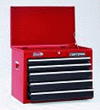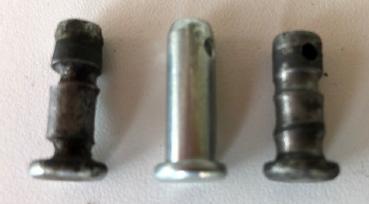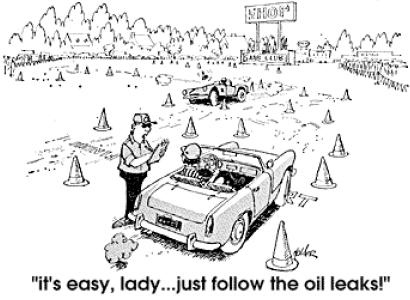 TechTip #3
TechTip #3
“A tale of two pins!”
| |

Two examples of clevis pin wear. New pin in middle
|
 In common with most cars, MG’s use clevis pins. The photograph shows two rather sorry examples with a brand new one in the middle of them for comparison. You can see the wear in the two I have from the “Fix-It” garage’s wall of shame collection! In common with most cars, MG’s use clevis pins. The photograph shows two rather sorry examples with a brand new one in the middle of them for comparison. You can see the wear in the two I have from the “Fix-It” garage’s wall of shame collection!
 These pins came from the links between the clutch and brake pedals and their respective master cylinder pushrods. A failure in either application would not be a remotely good thing! Clevis pins are also used on the handbrake cable connection to the rear brake wheel cylinder levers and the clutch slave cylinder pushrod connection to the release arm. These pins came from the links between the clutch and brake pedals and their respective master cylinder pushrods. A failure in either application would not be a remotely good thing! Clevis pins are also used on the handbrake cable connection to the rear brake wheel cylinder levers and the clutch slave cylinder pushrod connection to the release arm.
 Unfortunately, any wear in the clevis pin is visually hidden. All you can do is to look for slop (i.e., excessive play) in the various connection points and then, if concerned, remove the split pin, and withdraw the clevis pin for a full inspection. If you do find wear then it’s also worth looking at the surfaces the pin was in contact with. It’s not unknown for the holes in pushrods etc. to elongate and become oval over time. This increased ‘free play’ or slop will mean more pedal travel before the brakes, for example, start to engage. Ultimately the pins can fail. As our cars age issues like this will be on the rise and are well worth checking for. Unfortunately, any wear in the clevis pin is visually hidden. All you can do is to look for slop (i.e., excessive play) in the various connection points and then, if concerned, remove the split pin, and withdraw the clevis pin for a full inspection. If you do find wear then it’s also worth looking at the surfaces the pin was in contact with. It’s not unknown for the holes in pushrods etc. to elongate and become oval over time. This increased ‘free play’ or slop will mean more pedal travel before the brakes, for example, start to engage. Ultimately the pins can fail. As our cars age issues like this will be on the rise and are well worth checking for.
Steve Skegg
Technical Coordinator
Editor Note:
Steve is a long-time active member of the Chicagoland MG Club and spends his days working on British cars in the Fix-it Garage in Naperville, IL. These Tech Tips are his personal favorites of things that go wrong with the cars he sees. This will be a continuing article in the coming issues of Driveline.

|